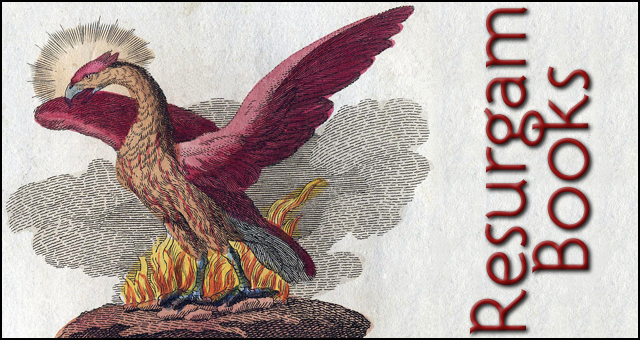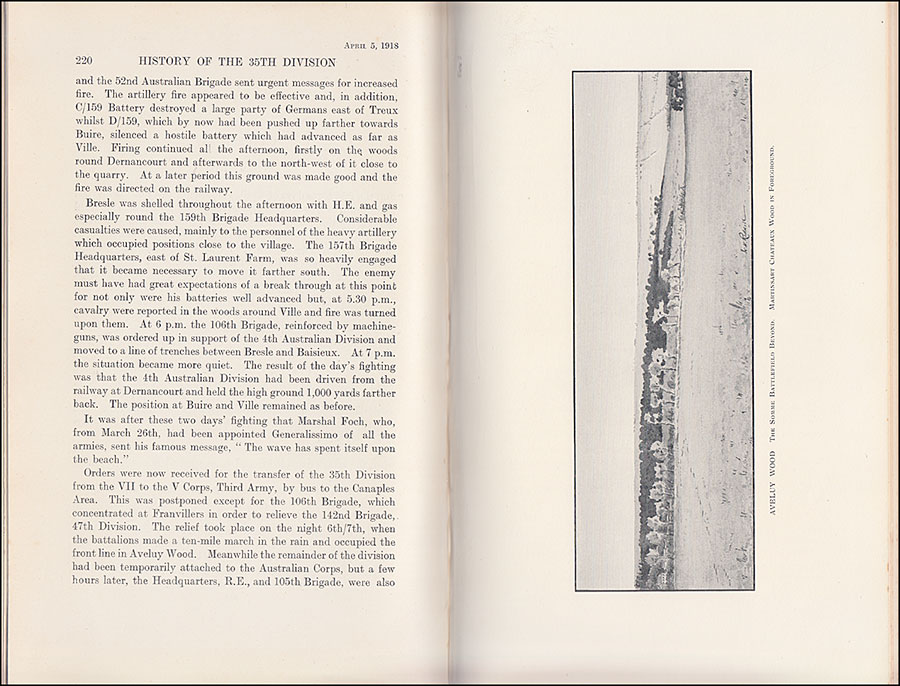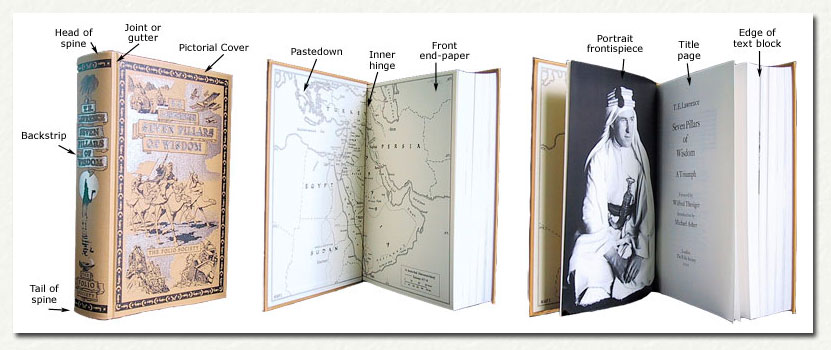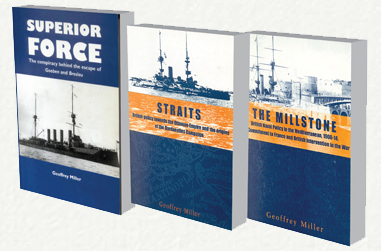 |
|
The History of the
35th
Division
in the Great War
by
Lieutenant-Colonel H. M. Davson
C.M.G., D.S.O., R.A. (Retired)
|
|
 |
|
This is
the 1926 First Edition, with a very pungent odour of tobacco,
but also two pencilled annotations by a previous owner,
Brigadier-General Henry O'Donnell, C.M.G., who commanded the
106th Brigade (35th Division)
The
last division of Kitchener’s Fourth New Army, the 35th
was initially formed in December 1914 as the 42nd
Division, but was renumbered when the original Fourth
New Army was broken up in April 1915. All the Infantry
Battalions were “Bantams” (height 5ft to 5ft 3 ins) but
not the Divisional troops (artillery, engineers etc) nor
the Pioneers. Originally intended for the Campaign in
Mesopotamia, the destination was changed to the Western
Front where the Division arrived in February 1916. With
replacement problems (weeding out inspections in
December resulted in 2,784 men being rejected) and new
drafts consisting principally of men from disbanded
Yeomanry units the Division was no longer a Bantam
formation by the beginning of 1917. The Division fought
on the Somme, in Third Ypres and in the battles of 1918;
in all it suffered 23,915 casualties. Three VCs were
won.
|
 |
|


A photograph of the previous owner,
Brigadier-General Henry O'Donnell, appears above (Plate V, top left)

Front cover and spine
Further images of this book are
shown below
|
|
 |
|
 |
 |
|
|
|
Publisher and place of
publication |
|
Dimensions in inches (to
the nearest quarter-inch) |
|
London: Sifton Praed & Co. Ltd |
|
5½ inches wide x 8¾ inches tall |
| |
|
|
|
Edition |
|
Length |
|
1926 First Edition |
|
[xii] + 346 pages |
| |
|
|
|
Condition of covers |
|
Internal condition |
|
Original blue cloth gilt. The covers are worn
and stained. There is extensive staining and discolouration to both front
and rear boards, which are also faded, particularly around the edges and
adjacent to the spine. The front spine gutter is split for its entire length
but has been re-glued; the rear spine gutter is partially split. The spine
ends and corners are bumped and frayed with some minor loss of cloth at the
head and tail of the spine. It appears the volume was stored in damp
conditions so that, now properly stored, the boards have bowed outwards
significantly. |
|
The end-papers are browned and discoloured.
The text is generally clean throughout on tanned paper. The exception to
this being two pencilled annotations by a previous owner, Brigadier-General
Henry O'Donnell, C.M.G., who commanded the 106th Brigade (35th Division)
from June 1915 to May 1917. Brigadier O'Donnell has not signed
the book and these are the only annotations I can see. The edge of the text
block is grubby, dust-stained and foxed. In
addition to the above, there is a pungent and overpowering odour of tobacco
permeating the whole volume. |
| |
|
|
|
Dust-jacket present? |
|
Other
comments |
|
No |
|
The interest in this First Edition is solely
in the prior ownership, by the General who commanded one of the Brigades
making up the 35th Division for almost two years on the Western Front. The
book itself is in worn condition externally (particularly the spine
gutters), with badly bowed covers; and while the text is generally clean,
there is no escaping the overpowering odour of tobacco. |
| |
|
|
|
Illustrations,
maps, etc |
|
Contents |
|
Please see below for details |
|
Please see below for details |
| |
|
|
|
Post & shipping
information |
|
Payment options |
|
The packed weight is approximately
1050 grams.
Full shipping/postage information is
provided in a panel
at the end of this listing.
 |
|
Payment options
:
-
UK buyers: cheque (in
GBP), debit card, credit card (Visa, MasterCard but
not Amex), PayPal
-
International buyers: credit card
(Visa, MasterCard but not Amex), PayPal
Full payment information is provided in a
panel at the end of this listing. |
|
|
 |
|
  |
|
 |
 |
|
The History of the 35th
Division in the Great War
Contents
Introduction
I. The Origin of the Bantam Division
II. The Move to France
III. Fauquissart and Neuve Chapelle
IV. The Somme
V. Arras
VI. Lihons and Rosieres
VII. Gricourt.
VIII. Gonnelieu and Epehy
IX. The Knoll and Gillemont
X. September, 1917
XI. Houthulst.
XII. Poelcapelle
XIII. German Offensive, 1918
XIV. Avelity Wood
XV. Locre
XVI. Ypres
XVII. The Final Advance
XVIII. Sweveghem.
XIX. The Crossing of the Scheldt : The Armistice
Appendix I : Honours.
Appendix II : Casualty Lists.
Appendix III: Original Order of Battle.
Appendix IV : Order of Battle, November, 1916.
Appendix V : Order of Battle, October, 1918.
Appendix VI: Corps Routine Orders.
Appendix VII: Brigade Routine Orders.
Appendix VIII: 4/ North Stafford Regiment.
Appendix IX : VII Corps Order No. 248.
Index
Illustrations
Maps
1. Somme and
Ancre
2. Flanders
Plans
1. Part of Somme Battlefield
2. Defence of Waterlot Farm 2. The Arras Trenches
4. Arras : Raid of Sherwood Foresters
5. Vermand-Gricourt
6. The Bird-Cage
7. The Knoll
8. Gillemont Farm
9. The Knoll and Gillemont Farm
10. Houthulst Forest
Panoramas
1. Part of
Somme Battlefield
2. Honnecourt Wood
Plates
I.
Major-General Sir R. J. Pinney, K.C.B.
II. Major-General H. J. S. Landon, C.B.
III. Major-General G. MacK. Franks, C.B.
IV. Major-General A. H. Marindm, C.B., D.S.O.
V. (a) Brig.-General H. O'Donnell, C.M.G.
(b) Brig.-General W. C. Staveley, C.B.
(c) Brig.-General J. W. Sandilands, C.B., C.M.G., D.S.O.
(d) Brig.-General J. H. W. Pollard, C.B., C.M.G., D.S.O.
VI. (a) Brig.-General W. R. N. Madocks, C.B., C.M.G.,
D.S.O.
(b) Brig.-General A. J. Turner, C.B., C.M.G., D.S.O.
(c) 2nd Lieut. H. F. Parsons, V.C.
(d) Lieut.-Colonel W. H. Anderson, V.C.
Views
1. View from
the Knoll
2. View from Wood House, Pilckem, looking over the
Valley of the Steenbeek
3. Aveluy Wood
|
|
 |
 |
|
The History of the 35th
Division in the Great War
Excerpt:
XV. Locke
On June 30th the division entrained at Doullens and Candas for the
XIX Corps Area (Lieut.-General Sir H. E. Watts). The 104th Brigade
detrained at St. Omer and marched to Tattinghem ; the 105th at
Wizernes and billeted in the neighbourhood ; the 106th at Arques and
marched to Ebblinghem. The artillery detrained at all three places
and concentrated at Wormhout and Ouderzeele. The 19/Northumberland
Fusiliers were at Hallines. Divisional Headquarters spent the day at
Wizernes.
The division was once again in the area which had been occupied on
the first arrival in France two-and-a-half years before, but next
day all units moved forward by omnibus and march route to the area
between Winnizeele and Abeele and were accommodated partly in
billets and partly in camp. The 104th Brigade relieved three
battalions of the French 71st Division in reserve.
On July 3rd the positions were as follows :—-The 104th Brigade was
moving up to relieve the French 217th Regiment in the Locre sector,
and advanced parties of the 17/Lancashire Fusiliers, the Machine-Gun
Battalion and the Trench Mortar Batteries went into the line with
the French. The 105th Brigade was partly at Arques and partly at
Abeele. The 106th was at Winnizeele. The Pioneers were at
Godewaersvelde. The artillery was in the act of taking up reserve
positions 2,000 yards south-west of Poperinghe, relieving the French
7th divisional artillery.
On the 4th the 104th Brigade began the relief of the 217th French
Regiment; the 105th relieved the 104th in the Abeele area ; the
106th moved to Godewaersvelde, the 18/Highland L.I. relieving a
battalion of the 221 French Regiment in the line of the Locre
sector. The artillery put two guns per battery into the line in the
neighbourhood of Westoutre.
During the next two days the relief was completed.
The G.O.C. took over command of the Locre sector at 8 a.m. on the
6th, with headquarters at Le Mort Homme (La Montagne) in a quarry
one mile north-east of Mont des Cats. Rear headquarters was at
Terdeghem. The division was under the tactical command of the French
XVI Corps, but was administered by the British XIX Corps. The 41st
Division was on the left, and the 41st French Division, which was in
process of relief by the 36th British Division, was on the right.
The 104th Brigade was on the left at the Scher-penberg, the 105th,
which had relieved the 358th French Regiment on the previous night,
was in the centre on Mont Rouge, and the 106th on the right on Mont
Vidaigne and Mont Noir.
The country in which the 35th Division was destined to fight for the
next month is chiefly noteworthy in that it contained "many of those
isolated hills which rise at intervals above the Flanders Plain, the
best known of which lie in a straight line from west to east,
namely, Cassel, Mont des Cats, and Kemmel. Cassel, with its town,
for long the headquarters of the Second Army, and its numerous
windmills was to become familiar to the troops of the division. Mont
des Cats, crowned by the buildings of the Trappist Monastery, was a
notable feature in the landscape, and the once beautiful and
verdure-clad Kemmel was, when the 35th Division arrived in the area,
a stark memorial of the desolation of warfare.
Between Mont des Cats and Kemmel is a range running from north-east
to south-west including Scherpenberg, isolated to the north, and
Mont Rouge, Mont Vidaigne, and Mont Noir. These latter joined
together to form one chain about two miles in length, and rising
about 300 feet above the level of the plain. Since 1914 this region
had been a reserve billeting area, but the events of the 9th and
10th of April had brought it once more into the battle zone. The
heavy onslaughts of fresh German troops against British divisions,
many of which had already been deeply engaged farther south, had
compelled the Commander-in-Chief to ask for assistance from the
French. On the 16th these reinforcements began to arrive and
eventually came into line from the Kemmel-Messines road to the
Flanche Becque, north of Bailleul. On April 25th a violent
bombardment followed by an overwhelming attack had forced our allies
from Kemmel Hill and back across the intervening low ground to the
east of the Scherpenberg-Mont Noir line. Here, in spite of further
enemy efforts, the hostile advance was stopped and some successful
counter attacks improved the position and re-took the village of
Locre, part of which had been lost. This German success on the south
seriously threatened the communications in the Salient and made
necessary a withdrawal of the line east of Ypres. Any further
success in this area might have made necessary the evacuation of
Ypres itself. As it was, the advantage gained by the enemy
necessitated the Ypres-Poperinghe road being camouflaged as far as
Vlamertinghe.
Such was the situation when the 35th Division took over the line,
and instructions were issued to the effect that no further
withdrawal was to be thought of, and that any movement made was to
be in advance.
The enemy commenced operations at once. At 4.15 a.m. on the. 7th a
party of about 30 attempted a raid on a post of the 17/Lan-cashire
Fusiliers near Locre Hospice. A sharp hand-to-hand fight ensued, and
the enemy was driven off with casualties, leaving identifications.
From 3.30 p.m. to 6 p.m. a destructive shoot was carried out against
C/159 Battery, which was situated close under the hills, and
considerable damage was done to the equipment and to the position.
On the 8th Scherpenberg was shelled throughout the day.
Heavy thunderstorms possibly stopped any hostile infantry movements,
but the headquarters of the division was bombarded and 5 casualties
caused by a direct hit on the General Staff Office. Mont Rouge was
shelled by howitzers (5.9 in.), and the left portion of the front
line also received attention.
The communications forward of the line of heights were in full view
of the enemy, and in most cases reliefs, supply parties, etc., could
only move at night.
The next few days were very wet but fairly quiet. An enemy raid on
the left battalion front was repulsed, and a patrol encounter in
front of the centre brigade caused a few casualties.
On the night 14th/15th the 18/Lancashire Fusiliers under a Stokes
mortar and artillery barrage carried out a raid on the enemy
position 1,200 yards east of Locre and north of the Kemmel road. The
advance was checked owing to the trench mortar barrage falling
short, and on account of this the party on the right had to
withdraw. A few minutes later it appeared probable that enemy bombs
were also falling in front of the hostile wire in addition to our
own. In spite of this, efforts were made to reach the trench which
was the point of attack. On the right 2nd Lieutenant Hill got
through the wire, whilst it was being cut by a bangalore torpedo,
and his section followed him. This party came under machine-gun and
rifle fire, and Lieutenant Hill was wounded in the arm and knocked
over by a bomb. Undaunted by this he led his men forward, bombed the
trench, and silenced the machine-gun.
2nd Lieutenant Silliton, on the left, also entered the trench with
two sections and searched a big dug-out, but found it empty. The
delay caused by the short shooting of the mortars made further
progress impossible; and the party withdrew.
Later on, a patrol under Captain Rigby, M.C., went out to search for
killed and wounded. This patrol penetrated the wire for the second
time by the gap made by the torpedo on the right. Corporal Gripps,
203rd Company R.E., had fired this. He also afterwards brought in a
wounded man on his back from the hostile trench.
It was considered that the reason the raid did not achieve greater
success was due to the delay and confusion caused by the short
shooting of the Stokes. A considerable increase in hostile artillery
activity on the next day was apparently the result of it.
As intelligence indicated a hostile attack on the army front on. the
18th, intense harassing fire was carried out on the night 17th/ 18th
between 10 p.m. and 3.15 a.m., and again at noon on the 18th. No
attack developed, and except that Locre was heavily shelled, the day
was abnormally quiet. On the 20th the 12/Highland L.I. occupied
several hostile posts, which the enemy made no attempt to retake.
Booby traps were found in some of them, but were destroyed without
mishap. The 105th Brigade advanced the posts held by it in order to
conform. A patrol of the 4/North Staffordshire advanced on a
machine-gun post but found it unexpectedly empty, and two nights
later, in reply to an abortive German raid, a patrol attempted to
force its way through the wire of an enemy strong point, but was
held up with bombs and rifle fire. A hand-to-hand fight ensued, and
one German was killed. The patrol leader and two others were
afterwards found to be missing. Hostile fire now increased again,
and on the 25th the battery positions were subjected to a severe
bombardment. Both A/159 and B/159 Batteries lost guns.
The project was now formed that an attack should be made on the high
ground known as the Dranoutre Ridge. This operation, which was to be
on a somewhat large scale, was entrusted to the 106th Brigade, and
accordingly, in order to allow of the necessary preparations, on the
night 25th/26th, the 17/Royal Scots and the 12/Highland L.I. were
relieved in the line by two battalions of the 90th Brigade, 30th
Division (15th and 16th London battalions). On the following night
the 18/Highland L.I. were relieved, and the command of the right
sector passed to the G.O.C. 90th Brigade. Simultaneously, the 77th
Brigade, A.F.A., came under orders of the C.R.A., 35th Division. At
the same date General Marindin, by desire of the Corps Commander,
moved his headquarters to the rear position at Terdeghem. The C.R.A.
and C.R.E. remained at Le Mort Homme.
On the night of the 27th, at 11.30p.m., a very successful operation
was carried out by the 19/Durham L.I. against the enemy trenches
opposite the Hospice at Locre. The force consisted of 28 other ranks
of " X " Company under Captains Smith and Ryall and 32 of " Z "
Company under 2nd Lieutenants Dyer and Jordan. Captain H. Heaton,
M.C., supervised the enterprise.
The party got into position in front of its lines before zero, and
bangalore torpedoes were placed in the enemy wire. Then, under an
accurate artillery and Stokes mortar barrage, the party advanced and
entered the enemy work, at two points. It was soon evident that
either a relief was in progress or that the enemy was forming up for
an attack, for the trenches were full of men, many of whom lined up
on the parapet. Fierce hand-to-hand fighting followed the entry of
the Durhams in which at least 20 of the enemy were killed.
On the left, Captain Ryall with some men rushed a machine-gun post
and, although himself seriously wounded, eventually captured it and
killed the crew. Subsequently, with the assistance of his servant,
he brought the gun back to our lines.
The enemy troops fought bravely and showed little or no inclination
to surrender. It was, therefore, necessary to exercise extreme
measures in dealing with them. Four prisoners were sent back to
headquarters, but, owing to recalcitration on their part, only 2
could be delivered alive. In addition to those overcome in the
actual fighting, about 50 dead were counted in the trench, who
presumably had been killed by the barrage. None of the Durhams was
killed. In addition to Captain Ryall, Captain Smith and Lieutenants
Dyer and Jordan were slightly wounded, as well as about 20 men. The
battalion was then relieved by the 17/Lancashire Fusiliers.
On the 29th the Army and Corps Commanders inspected the 106th
Brigade, which was then training for attack in the Sylvester Cappel
Area, and on this day the 27th Battalion of the 2nd Canadian
Division was attached to the 35th Division for instruction in the
line. On the 31st this battalion relieved the 19/Durham L.I. in
reserve in the left sector, and the Durhams moved back to camp near
Terdeghem.
Mont Rouge had now been heavily shelled for three days in succession
and, in addition to this, the enemy appeared to be adopting our
methods of dropping sudden crashes of fire on sensitive spots. Some
damage was done, notably to the advanced wagon line of the 159th
Brigade, R.F.A., but, generally, the casualties were not in
proportion to the expenditure of ammunition. Per contra, it was
stated by prisoners that our harassing fire by night was causing the
enemy great inconvenience.
On August 1st the 17/Lancashire Fusiliers celebrated Minden Day by
raiding the German trenches a thousand yards east of Locre. Two
platoons started under Lieutenants Stott and Worthington. No
artillery or Stokes barrage was employed. Lieutenant Stott's party
entered the trench and captured a prisoner. The rest of the garrison
were either killed or fled . . .
|
|
 |
|
  |
 |
|

Please note: to avoid opening the book out, with the
risk of damaging the spine, some of the pages were slightly raised on the
inner edge when being scanned, which has resulted in some blurring to the
text and a
shadow on the inside edge of the final images. Colour reproduction is shown
as accurately as possible but please be aware that some colours
are difficult to scan and may result in a slight variation from
the colour shown below to the actual colour.
In line with eBay guidelines on picture sizes, some of the illustrations may
be shown enlarged for greater detail and clarity.






The previous owner,
Brigadier-General Henry O'Donnell (whose photograph appears below,
Plate V, top left), has annotated two passages in the book, at page
13 (above) and page 118 (below):
Page 13: “Gen. Bridger wrote
this to me. I went straight down to the front line & gave orders on
the spot. The salvage operations were going on & the enemy's
artillery fire was very heavy but mostly on the support line.”
Page 118: “This was the last day I was in command of the 106th. I
watched them pass me on the road to Epehy, standing at the Xrds [crossroads]
at Peronne. Pollard took over from me the night before.”








 |
|
 |
|
 

|
 |
|
U.K. buyers:
|
To estimate the
“packed
weight” each book is first weighed and then
an additional amount of 150 grams is added to allow for the packaging
material (all
books are securely wrapped and posted in a cardboard book-mailer).
The weight of the book and packaging is then rounded up to the
nearest hundred grams to arrive at the postage figure. I make no charge for packaging materials and
do not seek to profit
from postage and packaging. Postage can be combined for multiple purchases. |
Packed weight of this item : approximately 1050 grams
|
Postage and payment options to U.K. addresses: |
-
Details of the various postage options can be obtained by selecting
the “Postage and payments” option at the head of this
listing (above).
-
Payment can be made by: debit card, credit
card (Visa or MasterCard, but not Amex), cheque (payable to
"G Miller", please), or PayPal.
-
Please contact me with name,
address and payment details within seven days of the end of the
listing;
otherwise I reserve the right to cancel the sale and re-list the item.
-
Finally, this should be an
enjoyable experience for both the buyer and seller and I hope
you will find me very easy to deal with. If you have a question
or query about any aspect (postage, payment, delivery options
and so on), please do not hesitate to contact me.
|
|
 |
 |
|
International
buyers:
|
To estimate the
“packed
weight” each book is first weighed and then
an additional amount of 150 grams is added to allow for the packaging
material (all
books are securely wrapped and posted in a cardboard book-mailer).
The weight of the book and packaging is then rounded up to the
nearest hundred grams to arrive at the shipping figure.
I make no charge for packaging materials and do not
seek to profit
from shipping and handling.
Shipping can
usually be combined for multiple purchases
(to a
maximum
of 5 kilograms in any one parcel with the exception of Canada, where
the limit is 2 kilograms). |
Packed weight of this item : approximately 1050 grams Please be aware that this is a large and heavy book, making international postage expensive
| International Shipping options: |
Details of the postage options
to various countries (via Air Mail) can be obtained by selecting
the “Postage and payments” option at the head of this listing
(above) and then selecting your country of residence from the drop-down
list. For destinations not shown or other requirements, please contact me before buying.
Due to the
extreme length of time now taken for deliveries, surface mail is no longer
a viable option and I am unable to offer it even in the case of heavy items.
I am afraid that I cannot make any exceptions to this rule.
|
Payment options for international buyers: |
-
Payment can be made by: credit card (Visa
or MasterCard, but not Amex) or PayPal. I can also accept a cheque in GBP [British
Pounds Sterling] but only if drawn on a major British bank.
-
Regretfully, due to extremely
high conversion charges, I CANNOT accept foreign currency : all payments
must be made in GBP [British Pounds Sterling]. This can be accomplished easily
using a credit card, which I am able to accept as I have a separate,
well-established business, or PayPal.
-
Please contact me with your name and address and payment details within
seven days of the end of the listing; otherwise I reserve the right to
cancel the sale and re-list the item.
-
Finally, this should be an enjoyable experience for
both the buyer and seller and I hope you will find me very easy to deal
with. If you have a question or query about any aspect (shipping,
payment, delivery options and so on), please do not hesitate to contact
me.
Prospective international
buyers should ensure that they are able to provide credit card details or
pay by PayPal within 7 days from the end of the listing (or inform me that
they will be sending a cheque in GBP drawn on a major British bank). Thank you.
|
|
 |
 |
|

(please note that the
book shown is for illustrative purposes only and forms no part of this
listing)

Book dimensions are given in
inches, to the nearest quarter-inch, in the format width x height.
Please
note that, to differentiate them from soft-covers and paperbacks, modern
hardbacks are still invariably described as being ‘cloth’ when they are, in
fact, predominantly bound in paper-covered boards pressed to resemble cloth. |
|
 |
 |
|

Fine Books for Fine Minds |
I value your custom (and my
feedback rating) but I am also a bibliophile : I want books to arrive in the
same condition in which they were dispatched. For this reason, all books are
securely wrapped in tissue and a protective covering and are
then posted in a cardboard container. If any book is
significantly not as
described, I will offer a full refund. Unless the
size of the book precludes this, hardback books with a dust-jacket are
usually provided with a clear film protective cover, while
hardback books without a dust-jacket are usually provided with a rigid clear cover.
The Royal Mail, in my experience, offers an excellent service, but things
can occasionally go wrong.
However, I believe it is my responsibility to guarantee delivery.
If any book is lost or damaged in transit, I will offer a full refund.
Thank you for looking.
|
|
 |
 |
|
Please also
view my other listings for
a range of interesting books
and feel free to contact me if you require any additional information


Design and content © Geoffrey Miller |
|
 |
|
|
|